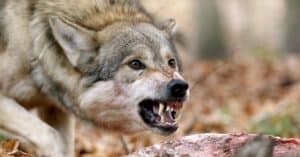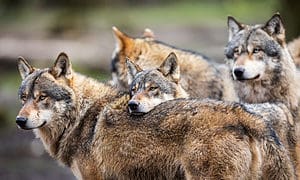Wolves are wild incredible canine creatures native to Eurasia and North America. Although these doglike carnivores may be among the many other social animals, with lots of fascinating facts about them, it is difficult to remove the indelible mark of wildness and danger from them. To some folks, they may be considered cute, while to others, they are fierce-looking. It is paramount to note that, regardless of what we perceive them to be, one must be meticulous when dealing with these most prominent extant members of the family Canidae.
Wolves are primarily known as established predators in the wild. They prey on various animals from small to big sized, including rodents, hares, elk, bison, and deer. According to the international taxonomic information system, these wild creatures have three distinct species and over thirty subspecies in different shades and sizes. Although wolves have no close interactions with humans, individuals must be careful when close to these wild animals.
Let’s find out how dangerous wolves are to humans.
Are Wolves Dangerous to Humans?
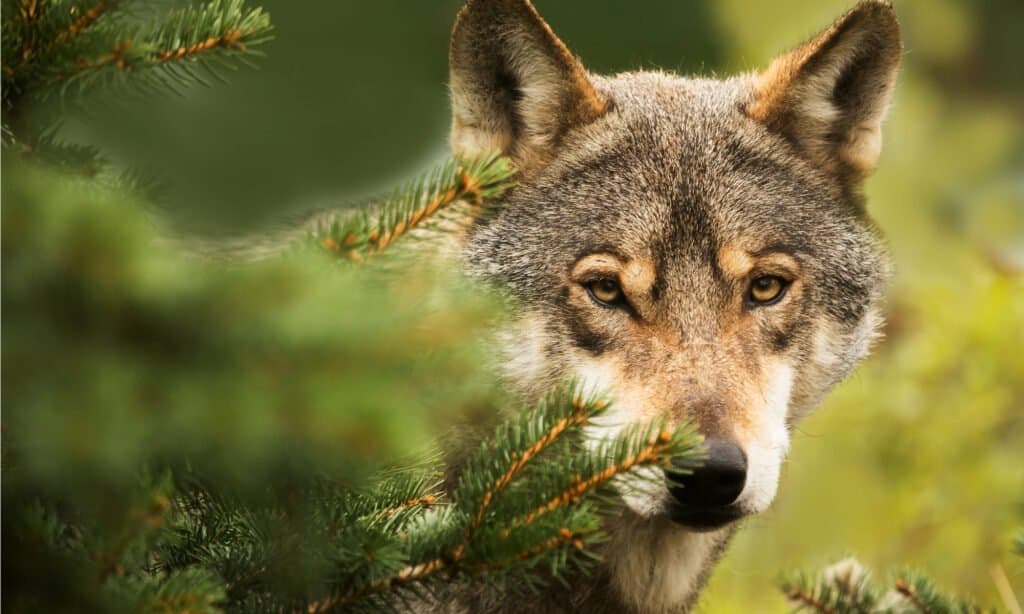
Since wolves avoid contact with humans, they don’t really pose a threat.
©Michal Ninger/Shutterstock.com
Wolves, being very cautious animals, avoid contact with humans. So they don’t pose a threat to humans.
Wolves’ interaction with humans dates back to the times before the creation of Rome, as at the time of the infants Romulus and Remus, who both suckled a she-wolf as infants. Wolves, however, do not have high interactions with humans in contrast to snakes, who have coexisted with humans for a more extended period.
With a long history of rivalry between humans and wolves, caused by the latter’s destructive and despicable attacks on livestock in many pastoral settlements, these wild creatures have effortlessly crumbled the livelihood of many livestock farmers while satisfying their appetite. As a result of the rivalry between humans and wolves, there is some reluctance when wolves contemplate launching an attack on humans. And we can say that this sudden fear to attack humans sprouted from their ancestral experience when charged up farm owners and hunters used traps, baits, poisons, decoys, snares, and pits to kill them.
Wolves, being ferocious predators and with 10 deaths per year recorded to their name, there is no doubt that the mere thought of these terrifying creatures poses a significant threat to humans and smaller animals. Moreover, they are regarded as high canine family members and hold a higher hierarchy than domesticated dogs.
What more? It is of high importance to note that the bite of a wolf can decapitate any prey it launches on. With this, one can ascertain that they are vicious compared to some other canine family members.
Most wild wolves are natural carriers of rabies. Decades ago, every bite from these vicious predators was fatal; and this, on its own, was heart-wrenching to humans who got attacked. However, since the development of vaccines, quick treatment has been the order of the day for persons attacked by these wild animals.
Are Wolves Dangerous to Other Animals?
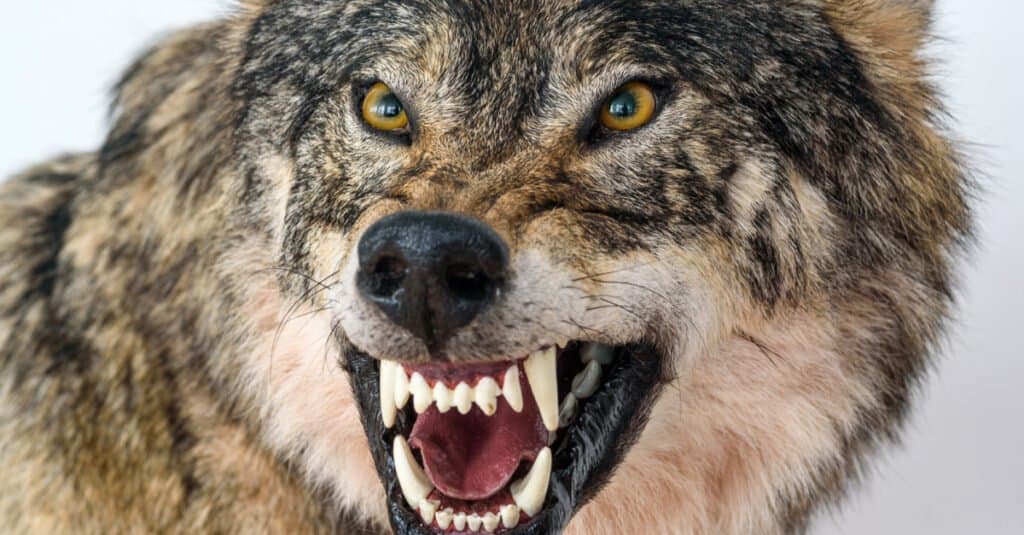
Wolves are dangerous to animals.
©shymar27/Shutterstock.com
One may think of this question as really hysterical. However, since these wild creatures are apex predators, it is only logical to conclude that they are dangerous to other animals, with exceptions to other apex predators.
Without mincing words, wolves are carnivorous animals with an insatiable desire to hunt down prey whenever the need arises. They prey on moose, elk, deer, bison, hares, raccoons, beavers, rabbits, and other animals.
How Does a Wolf Attack its Prey?
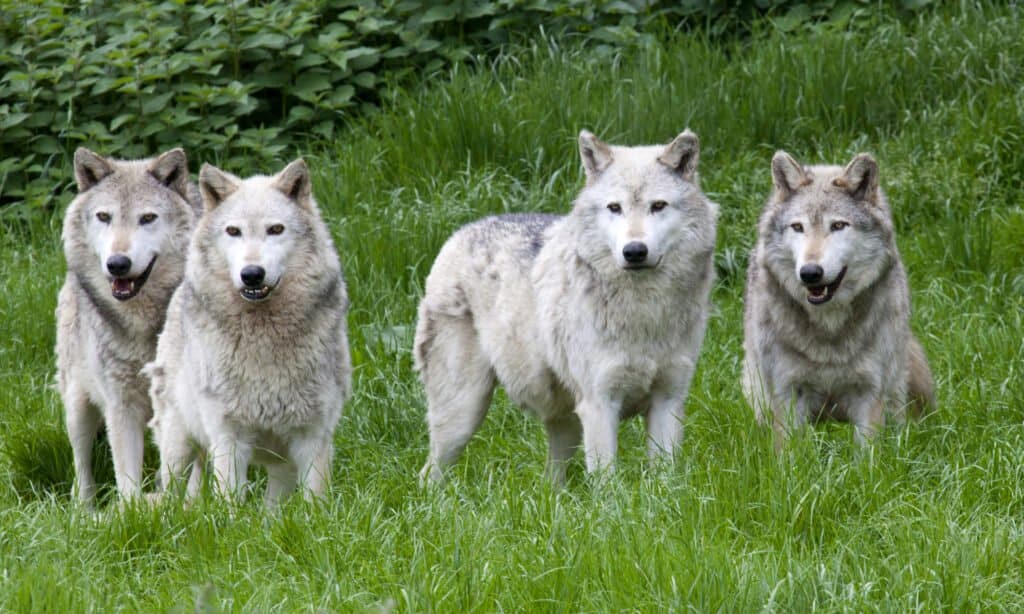
Wolves hunt in packs.
©Alan Jeffery/Shutterstock.com
Wolves are opportunists, and with their insatiable hunger, they stop at nothing when hunting potential prey. They carefully track and devour their prey within minutes with their excellent sense and hearing skills.
Intriguingly, they adopt a fascinating and dangerous technique when hunting prey. This technique allows wolves to analyze and mark out the weakness of their potential or desired meal while unleashing their staunch canine teeth on the neck or throat of the animals. The firm grip from their teeth often sends the prey into a state of shock or unconsciousness, which in almost all cases, leads to death. Sadly, the unfortunate prey’s skin and vital organs are torn apart and served as a meal for the pack or wolf.
Are Wolves Disease Carriers?
It would not be excessive to say a wolf’s life is rocked with pathogens, parasites, and viruses. Some of the viral diseases found in infected wolves include; rabies, canine hepatitis, canine parvovirus, amongst others.
When infected with rabies, it takes from eight to twenty-one days for the virus to stir a disruptive microbial rush, capable of causing recklessness, making the wolf desert its pack and travel long distances. As this happens, the infected wolf would likely infect other wolves it encounters on its journey.
Papillomatosis is survivable by wolves. Although they are not rampant, they also have the potency to alter the feeding habits of the wolves. Adult wolves are more likely to survive canine parvovirus than their pups.
Other Fascinating Facts About Wolves
- Wolves can record many successful hunts when they go about scavenging for food.
- They have litters of up to 4-6 pups.
- Interestingly, when a wolf pup is born, it comes into the world deaf and blind.
- Wolves can live more than a decade in the wild.
- They surprisingly have 42 teeth, and this aids their dangerous kills.
- Wolves howl day and night and communicate with each other.
- Surprisingly, wolves do not migrate but travel in packs to hunt over large areas.
- Male wolves are more prominent than their female counterparts.
- Sometimes, wolves leave their birth packs to join existing packs when their sexual inclinations mature.
The photo featured at the top of this post is © nataliatamkovich/Shutterstock.com
Thank you for reading! Have some feedback for us? Contact the AZ Animals editorial team.



